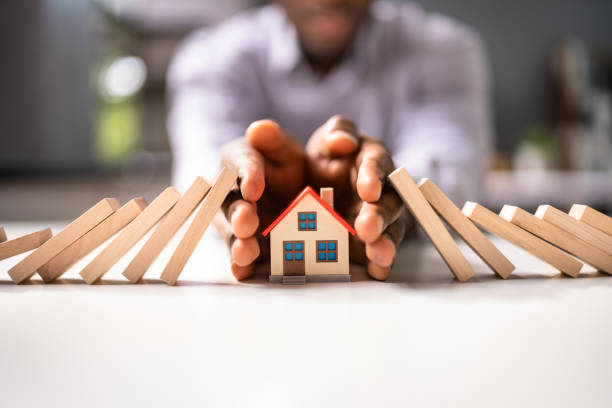If you own your home, be prepared to pay more to insure it: Homeowners insurance premiums are rising along with prices almost everywhere else in the economy.
Key findings
- The cost of insuring your home is rising faster than inflation and is expected to continue to rise as pandemic-era disruptions continue to drive up prices.
- Because homeowners insurance takes into account the cost of rebuilding your house, premiums are driven up by many of the things — like supply chain and labor shortage issues — that contribute to higher costs elsewhere in the economy.
- An increase in the frequency and severity of natural disasters also contributes.
The cost of homeowners insurance , like food and gas, rose last year and doesn’t appear to be going down anytime soon. The average annual premium nationwide rose to $1,398 in 2021, up 4 percent from 2020, according to the Insurance Information Institute trade group. Inflation for 2020 is about 1.2%, according to data from the Bureau of Labor Statistics.
In the fourth quarter of 2021, the average insurance rate increased 3.7% from the same period in 2020 for homes valued under $1 million, but 6.3% for those above that threshold, according to MarketScout, which tracks insurance rates. That compares with an average forecast of 4.6 percent for consumer inflation in the final quarter of last year, according to a November report by the Federal Reserve Bank of Philadelphia.
From 2017 to 2020, average homeowner premium rates increased a total of 11.4% on average, outpacing inflation of 7.3% over the same period.
Many of the pandemic-era supply problems that are driving up other prices are also driving up the cost of home insurance. So if supply chain issues and labor shortages stemming from the pandemic aren’t resolved soon, look for homeowner insurance premiums to continue their upward march.
“There’s a lot that goes into pricing homeowners insurance,” said Michael Barry, chief communications officer at the Insurance Institute. “One of the things home insurers look at is how much it would cost to rebuild your home in the event of a loss.
As a result, the rising cost of almost everything related to home construction – lumber, steel, concrete, architects and contractors – has contributed to the increase in homeowners insurance premiums. The National Association of Home Builders said wholesale prices for “all inputs” related to home construction rose 17.3% in November over the previous 12 months and were 22.7% higher than the pre-pandemic level , based on data from the latest Producer Price Index report released by the Bureau of Labor Statistics.
Another factor in the premium increases, Barry said, is the growing number of natural disasters that cost billions of dollars in losses. As of October 8, the US has experienced 18 weather/climate disasters with losses exceeding $1 billion each in 2021, according to the National Centers for Environmental Information. The 1980-2020 annual average for such events (adjusted for inflation) was 7.1, the centers reported.
“Climate risk and the increasing frequency and severity of disasters is something insurers have priced into policies,” Barry said. “Depending on what country you live in, prices can also be affected. Prices are also based on actual and expected losses in each country.”
In disaster areas, such as near the California wildfires, some homeowner’s insurance could double this year, said Richard Kerr, CEO of MarketScout. “That’s the really big story,” he said. “These people are getting crushed.”
Cost containment
While consumers can’t do much to control inflation or natural disasters, there are some specific actions they can take to try to soften the blow of rising premiums, Barry said. Between them:
- Pick up your deductible
- Bundle your auto and homeowner policies with one insurer to get a discount
- Invest in loss reduction tactics if you live in a disaster-prone area.
“You may need to do a cost-benefit analysis. But if you’re in a hurricane-prone state, you might want to look at shutters and wind-resistant windows,” Barry said. “This investment can lead to some discounts that can save you some money.

